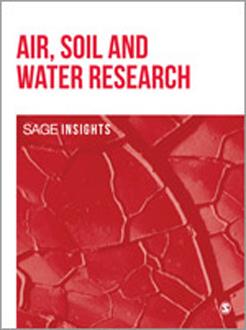Sorption coefficients were evaluated for pyroxasulfone, s-metolachlor, and dimethenamid-p across 25 soil types with different chemical and physical properties to better understand how soil properties influence the binding of pyroxasulfone in different soils. Sorption coefficients were determined using a batch equilibrium method to evaluate relative differences in binding among the three herbicides. Based on water solubility values, we would have expected the relative order of binding to be dimethenamid-p (1450 mg L−1 at 20°C), s-metolachlor (530 mg L−1 at 20°C), and pyroxasulfone (3.49 mg L−1 at 20°C) in order of increasing binding. However, when sorption coefficients were calculated, we observed the order of pyroxasulfone = dimethenamid-p < s-metolachlor in the order of increasing binding. The average Kd(sorption coefficient) values were 1.7, 2.3, and 4.0 L kg−1 for pyroxasulfone, dimethenamid-p, and s-metolachlor, respectively. Although dimethenamid-p has water solubility values that are over 400 times greater than pyroxasulfone, there was no statistical difference in binding between pyroxasulfone and dimethenamid-p. s-Metolachlor binding was statistically greater than both pyroxasulfone and dimethenamid-p. Across all soil chemical and physical properties, sorption coefficients for all three herbicides were highly and statistically correlated to soil organic matter. Sand and silt were also statistically correlated to binding, although these correlations could be explained by the high correlation of organic matter to these properties. Evaluation of sorption coefficients indicates that pyroxasulfone is most prevalent in the soil solution where herbicides are available for plant uptake. Reduced soil binding and greater activity at the target site could contribute to comparable weed control efficacies of pyroxasulfone even when applied at lower use rates compared to either s-metolachlor or dimethenamid-p.
How to translate text using browser tools
1 January 2020
Evaluation of Sorption Coefficients for Pyroxasulfone, s-Metolachlor, and Dimethenamid-p
Eric P. Westra,
Dale L. Shaner,
Ken A. Barbarick,
Raj Khosla

Air, Soil and Water Research
Vol. 8 • No. 1
January 2015
Vol. 8 • No. 1
January 2015
dimenthenamid
metolachlor
Pyroxasulfone
sorption




